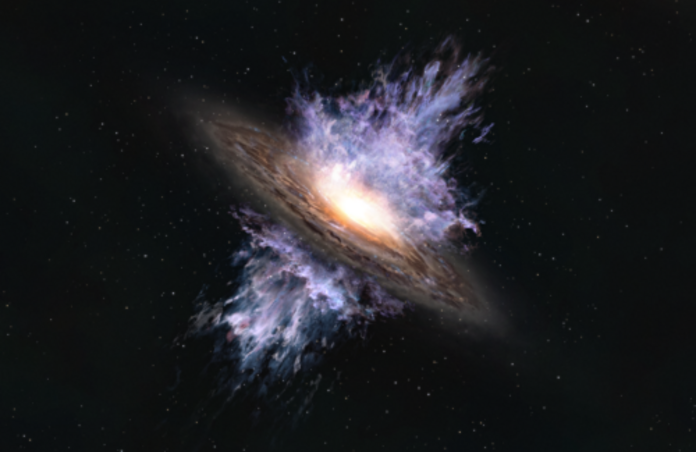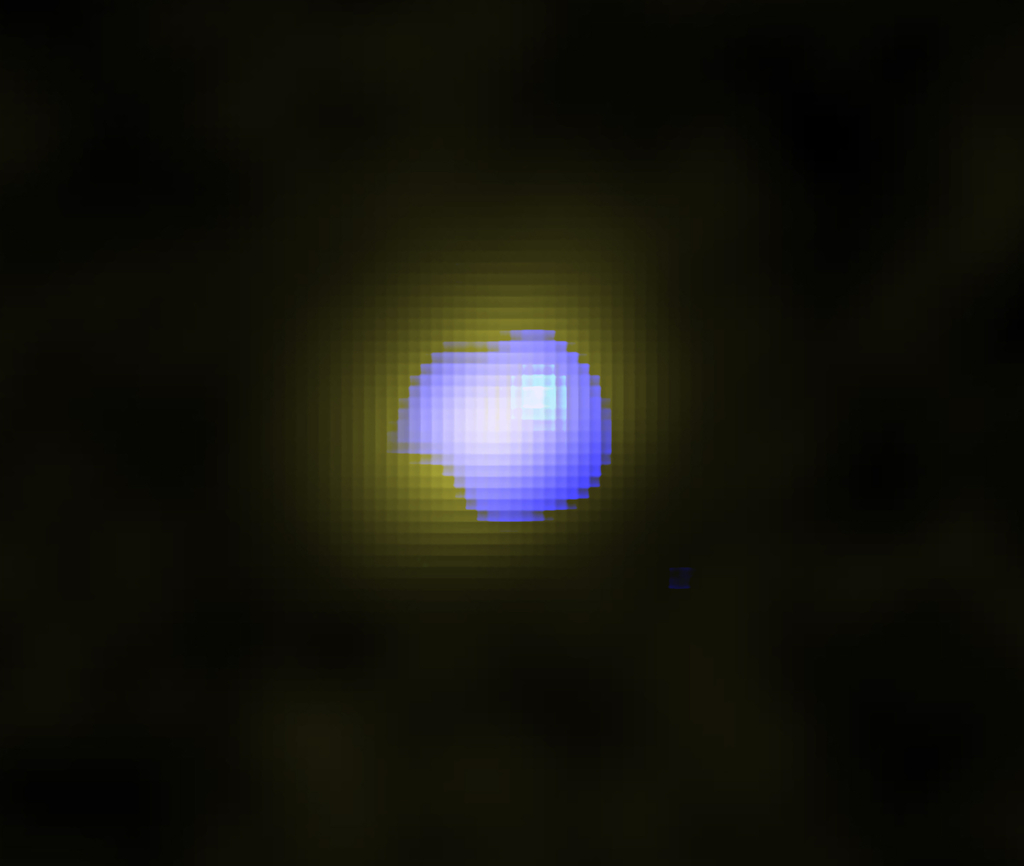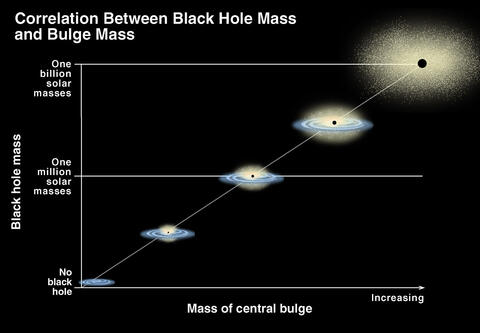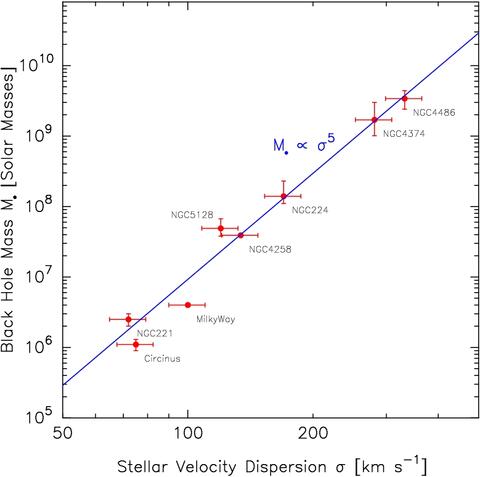ALMA witnesses earliest black hole storm

13.1 billion years old galactic wind from J1243+0100’s black hole sheds light on how galaxies grow.
A recent article mentioned dark energy as a way to understand how the Universe changes with time. Another key strategy is to study the way galaxies evolve, which is not straightforward. What is known however, is that most galaxies contain a supermassive black hole at their centre. From previous research, it was found that the mass of this black hole is roughly proportional to the mass of the bulge of its host galaxy. This is not at all obvious, considering the size difference between the bulge, light-years across, and that of the black hole, with a diameter of a few millions or billions of kilometres – how could it affect the whole bulge just by its presence? Yet the existence of the mass correlation seems to hint at a process that causes galaxies and their black holes to evolve together.
An interesting consideration is that of galaxy mergers, and why and how the proportionality relationship is maintained. The mingling of stars and the input of gas and dust during galactic collisions perturb the bulge, especially the way stars move. The M–σ relation, which is used to determine the mass of a black hole from the stellar velocity dispersion (the dispersion of stars’ speeds compared to the average velocity), appears to still hold for galaxies after mergers. Again, this suggests that there is an effect correlating properties of the bulge and the black hole’s mass.
Galactic wind is one phenomenon that provokes interactions between the black hole and its surroundings: as the black hole feeds on nearby stars, gas and dust, that matter gets accelerated because of the hole’s gravitational forces, thus emitting energy which pushes matter outwards – the galactic wind. Most frequently, this wind is talked about when discussing what stops star formation in a galaxy. What is interesting here is that this effect seems to stabilize the relative masses of the bulge and of the black hole, and computer simulations show that this would have been in place about 13 billion years ago.

Now a team has used the Atacama Large Millimeter/submillimeter Array (ALMA), an array of 66 radio telescopes in Chile, to find a galactic wind driven by a supermassive black hole 13.1 billion years ago, pushing the start date of galactic winds 100 million years back. Candidate galaxies were selected from data obtained with the National Astronomical Observatory of Japan (NAOJ)’s Subaru Telescope in Hawaii, which in 2019 reported the discovery of 83 supermassive black holes in the early Universe. By studying the motion of gas inside galaxy HSC J124353.93+010038.5, specifically the radio emission from dust and carbon ions, it was found that the gas flows at 500 km/s - more than enough to characterise that as a galactic wind. The team also ascertained that the mass ratio between the black hole and the bulge is similar to that of present-day galaxies. Hence, it seems that galaxies and their central black holes evolve together from a very young age onward, and that galactic wind has an essential role to play in maintaining that relationship.
Galaxies are likely to have coevolved with their black holes for the past 13 billion years. To put it another way, without supermassive, central black holes and their galactic winds, galaxies probably would look very different!
Cover Image: Artist's impression, ALMA (ESO/NAOJ/NRAO)
Image credits:
1 - Mass correlation, K. Cordes, S. Brown (STScI)
2 - M-sigma relation, MSigma for Wikimedia Commons
3 - 202106_J1243_ALMA, ALMA (ESO/NAOJ/NRAO), Izumi et al.


